Following @abichat's suggestion:
point2pacman <- function(x, y, grp) {
if (is.data.frame(x)) {
y <- x$y
x <- x$x
}
if (length(x) == 1L || length(y) == 1L) {
x <- rep(x, max(length(x), length(y)))
y <- rep(y, max(length(x), length(y)))
}
if (missing(grp)) grp <- seq_along(x)
do.call("rbind.data.frame",
Map(function(i, a, b)
data.frame(grp = i,
x = a + c(sin(pi*(0:5)/3),0) / 2,
y = b + c(cos(pi*(0:5)/3),0) / 2),
grp, x, y))
}
library(ggplot2)
hexpoints2 <- data.frame(x=c(0,1), y=c(0,0))
point2pacman(hexpoints2$x, hexpoints2$y)
# grp x y
# 1 1 0.000000e+00 0.50
# 2 1 4.330127e-01 0.25
# 3 1 4.330127e-01 -0.25
# 4 1 6.123032e-17 -0.50
# 5 1 -4.330127e-01 -0.25
# 6 1 -4.330127e-01 0.25
# 7 1 0.000000e+00 0.00
# 8 2 1.000000e+00 0.50
# 9 2 1.433013e+00 0.25
# 10 2 1.433013e+00 -0.25
# 11 2 1.000000e+00 -0.50
# 12 2 5.669873e-01 -0.25
# 13 2 5.669873e-01 0.25
# 14 2 1.000000e+00 0.00
# similarly: point2pacman(hexpoints2)
ggplot(hexpoints2, aes(x, y)) +
geom_text(aes(label=label), color = "red") +
geom_polygon(aes(group = grp), data=point2pacman(hexpoints2), color="black", fill=NA)

I used hexpoints2 as the "main" data for ggplot in case you had other things going on there, and then overrode the data used just for that geom_polygon call. I added geom_text here to demonstrate the benefit of this method. The next step in this would be to define your own geom_pacman function that does some of this yourself; I haven't done that much, so I went with something quick, though it should not be that difficult. (Deprecated docs here, it's likely to be included somewhere in https://ggplot2.tidyverse.org/.)

